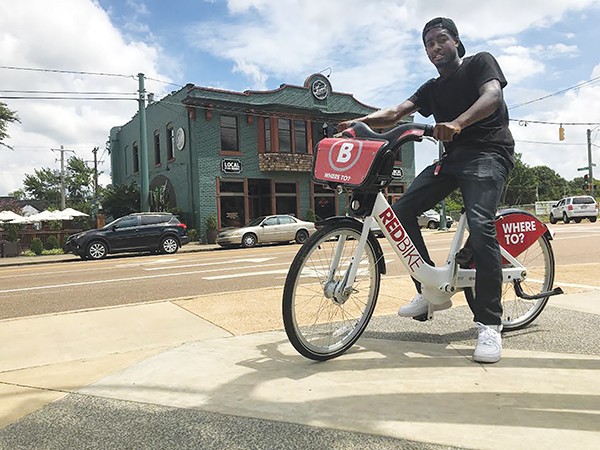A few short years ago, once you got south of Earnestine & Hazel’s on South Main, you entered a barren urbanscape of abandoned warehouses, dusty railyards, and weedy, empty lots. Now the streets are lined with row after row of apartment buildings. Hip restaurants like Loflin Yard and Carolina Watershed are repurposing old industrial spaces in creative ways. South of South Main is booming, inhabited by thousands of mostly young Memphians who live, work, and play Downtown.
Will it last? Can a neighborhood built on young folks wanting to live Downtown sustain itself? Well, it can, but only if there is a steady stream of fresh young folks wanting to live there in the coming years. Here’s hoping there is. Otherwise, well, that’s a lot of apartments to fill.
That’s because as those young Memphians grow older, they’ll form relationships and maybe — as tends to happen — decide to have children. At that point, they’ll usually want the customary accoutrements of family living: a house, a yard, a mutt.
The closest neighborhoods to Downtown are already feeling the pressure of the influx — from Downtown and from older suburbanites moving in. If you want to buy a home in Midtown, East Memphis, Cooper-Young, etc., you’d better be pre-approved for your loan and be ready to pounce when a house you like comes on the market. Memphis’ core is a hot housing market right now.
In recognition of that, developers are moving in, buying distressed properties, doing teardowns, and putting up two or more new houses on what were once single-family lots. These new homes are often what are called “tall skinnies,” because, well, that’s what they are. Another name for them is “infill homes,” and they are going up all over Cooper-Young and elsewhere in Midtown. (The Flyer‘s Toby Sells has done numerous stories on infill housing, with more to come soon.)
On the plus side, more housing is being created in core city neighborhoods, meaning a bunch of fresh residents, bringing more businesses, new restaurants and retail, and, hopefully, new students for neighborhood schools. On the down side, there is a danger our old neighborhoods will lose their historic charm as older homes get torn down, trees get removed, and residential parking gets more difficult. Try finding a parking spot around the new Nashville export, Hattie B’s, on Cooper.
In fact, if you want to see where all this could be going, drive up to East Nashville and behold the glut of tall skinnies on street after street. Behold the young hipsters with strollers. Behold the bicyclists and coffee shops. Behold the new urbania. It’s coming, for better and for worse.
In Memphis, all the attendant paraphernalia of an “It City” — the bike lanes, the bike-share program, the Bird scooters, the moving of musicians here from Austin and Nashville, the booming South Main, Overton Square, Crosstown, Broad Avenue, and Cooper-Young entertainment/restaurant districts, the Railgartens and Urban Outfitters and Hattie B’s — it’s all developing under our very noses. Something’s happening here, Mr. Jones, and we’d better pay attention.
Case in point: We’re increasingly seeing plans for new apartment buildings springing up in Midtown, with the city offering the usual PILOT plans to “encourage” developers by allowing them to avoid taxes for an agreed-upon period of time. Whether or not those deals make sense is an open question. What shouldn’t be in question is a requirement that in order to get a PILOT, developers should have to build structures that reflect the character of the surrounding neighborhood.
Traditional Midtown apartment buildings — the Gilmore, the Kimbrough, the Knickerbocker, the apartment buildings along Poplar near Overton Park — seamlessly integrate with the cityscape and their neighborhoods. In contrast, many of the new apartment designs being given PILOTs are stark, cheap-looking boxes, seemingly built only to take advantage of the housing boom with no consideration of the visual impact on the character of our historic streetscapes.
Again, go visit Nashville — specifically, the Gulch, just south of Downtown — if you want to see how quickly these cheap-looking boxes can redefine the character of a neighborhood. Memphis needs to put serious design restrictions and guidelines in place before giving out tax breaks to developers.
If we don’t do it, “It” is going to do us.
 Joshua Cannon
Joshua Cannon  Bianca Phillips
Bianca Phillips